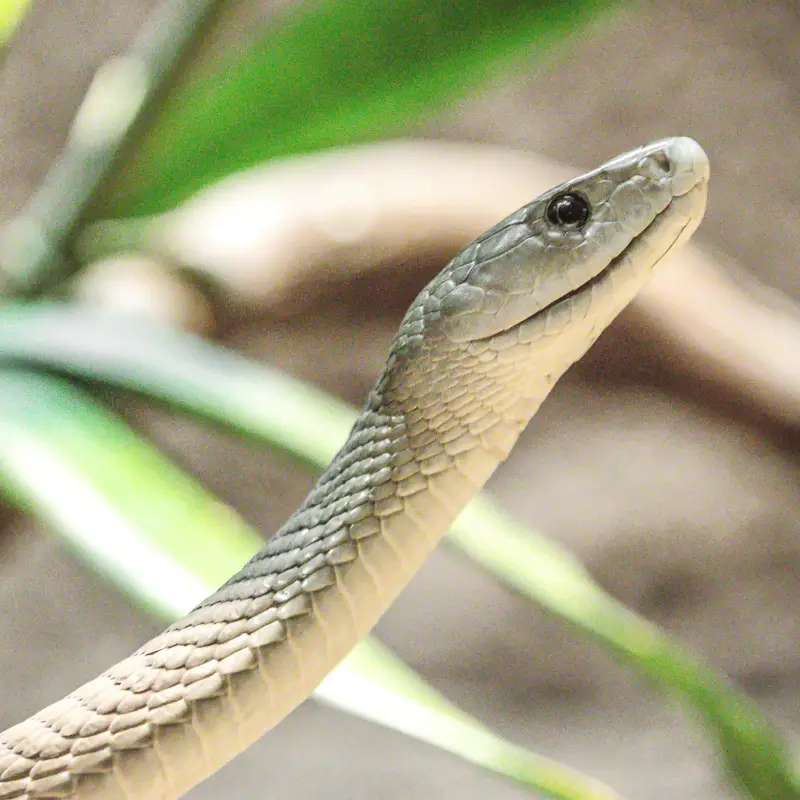In the world of snakes, the Black Mamba has quite a big reputation. It is no doubt one of the deadliest snakes in the world. The black mamba is known to be the longest poisonous snake in Africa. It also wins the place of the second-longest venomous snakes in the world.
It is also one of the fastest moving land snakes across the world. The relationship between black mamba and the aboriginal people of Africa is so long that you can find the name of this snake in many old African folklores and myths. Over the years, the black mamba bite has caused thousands of deaths in Africa.
The herpetologists think that the reputation of the black mamba is not unfounded. These snakes can move extremely fast and are highly toxic. When threatened, the Black Mamba snakes can become very aggressive. They are known to strike the victim repeatedly and injects a considerable amount of venom each bite.
The venom of Black Mamba is highly lethal. But, unfortunately, even though the antivenom for the black mamba toxins is there, it is not extensively available across the Eastern and Southern regions of Africa, which is the native habitat of the snake. One of the top reasons these snakes are considered the leading killers in a land where more than 20,000 people die of snakebite.
Species Overview
- Scientific Name: Dendroaspis polylepis
- Genus: Mambas
- Size: up to 14 feet
- Life Span: In the wild, Black Mamba snakes can live up to 11 Years, but in captivity, these snakes can live for about 20 years.
Location
The black mamba snakes live in a wide range of areas in the sub-Saharan region. The distribution range of the snake includes areas like Cameroon, Burkina Faso, the Democratic Republic of the Congo, Central African Republic, Ethiopia, South Sudan, Kenya, Eritrea, Somalia, Tanzania, Uganda, Rwanda, Burundi, Malawi, Eswatini, Zimbabwe, Zambia, Botswana, Angola, Namibia, and South Africa. The distribution of the Black Mamba in the western parts of Africa is a disputed affair. In 1954, the presence of Black Mamba snakes was recorded in the Dakar province of Senegal. However, this observation and a second one conducted in 1956 have not been confirmed later. So, the distribution of this snake species in this region is inconclusive.
The black mambas are found in the northern parts of Southern Africa. In South Africa, these sakes generally live in the coastal region. However, they are not found in the desert area of the country.
Appearance
Contrary to popular belief, the Black Mamba snakes are not black. These snakes can come in grey, brown, olive, and sometimes khaki in colour. The young snakes are lighter than the adult ones. The colours of most of the young snakes are olive green or grey. However, the greenish tinge is dark enough to make sure that people do not confuse them with green mambas. The underbody of these snakes is of cream colour. Sometimes, the underbelly of the snakes can have a yellow or green. Some snakes can have speckled dark blotches in their bodies. Some black mambas also have alternating light and dark scales near the posterior section of their bodies. These alternating scales give an impression of lateral bars.
The name of the snake is derived from their black mouth. The inside of the mouth of these snakes is inky black. However, some snakes can also have a light-coloured mouth.
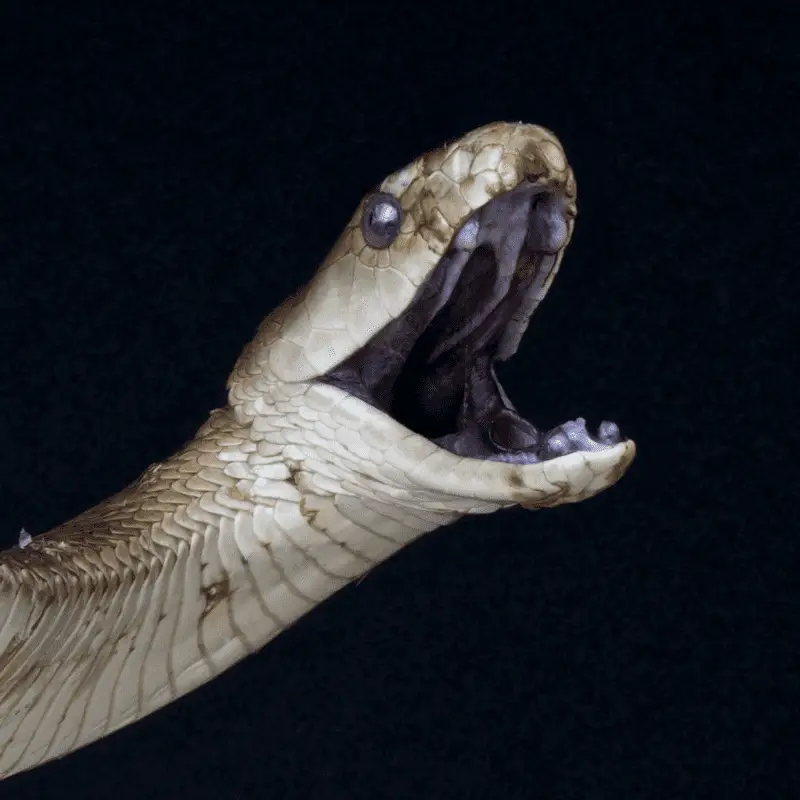
Like the cottonmouth snakes, when threatened, the back mambas also open their mouth to show the black lining as a warning signal. The green mambas and other snakes have a white mouth. That makes the black mambas significantly different from the rest. The eyes of the snake are either black or brown with a silver-white edge right on the pupils.
Length
There is enormous controversy over the length of the black mamba snakes. There are many reports of substantial black mambas that are either captured or killed and supposedly measured accurately. The stories about the size of the black mambas are often exaggerated, and the tales of six-meter-long black mambas are pretty standard. However, literature has shown that the black mambas can reach a maximum of 4.5 meters in length. However, the herpetologists these days explain that the 4.5 meter long black mambas are extremely rare. While there may be monster mambas of 4.3 meters in the past, these specimens are not seen these days.
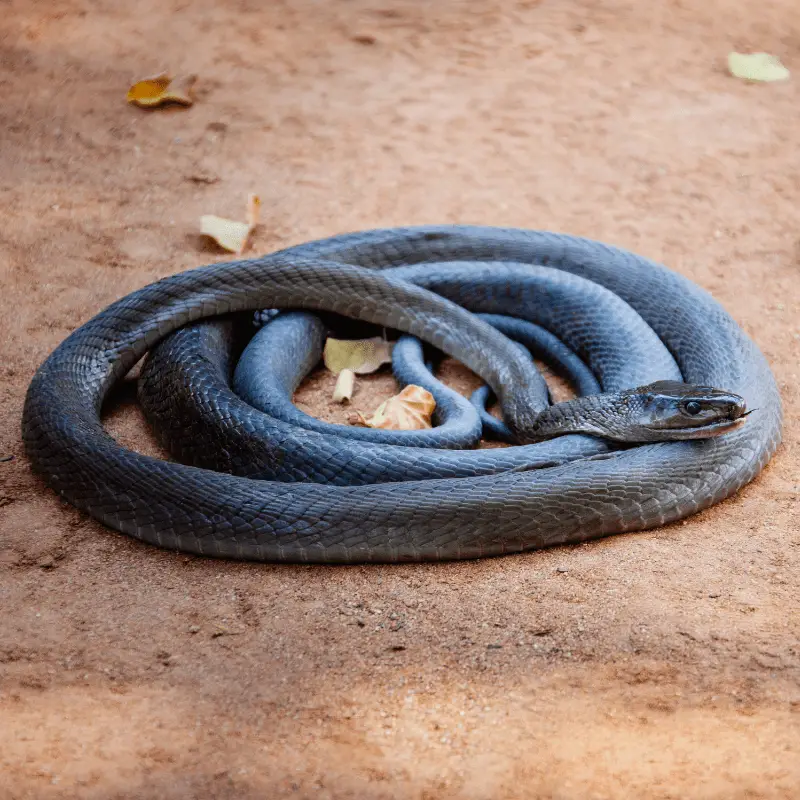
Habitat
The black mamba snakes mainly live in the rocky hills and the savannas of Africa. However, some populations of snakes are found in the woodlands of the continent as well. These snakes like to live in open and low spaces. Therefore, you can almost always find the black mamba snakes sleeping in the crevices of the rocks, tree hollows, empty termite mounds, or caves.
Traits
The athletic body of black mambas makes them one of the fastest snakes in the world. But, unfortunately, that is also one of the reasons that make these snakes so fearsome. The slithering speed of the black mambas can reach up to 12 miles per hour.
It is, no doubt, extremely fast. Still, it does not match the folk tales, depicting how these snakes have outrun speeding horses time and again. The speed of the black mamba snakes gets reduces even when they cover a long distance. These snakes maintain an average speed of 7 miles per hour when they cover a more considerable distance.
The black mamba snakes can slither away quickly using small bursts of speed if they are on the plain ground. They can also move fast while keeping one-third of their bodies above the floor while keeping their head high.
Black mambas racing while keeping their head nearly 4 feet above the ground is a blood-curling sight. However, there is a saying that the black mambas only use their astonishing speed when they are moving away from the predators. However, they rarely use the same rate while hunting.
Unlike most of the snakes, the black mambas are a creature of habit. They remain active during the daytime, and at night, they come back to the same place to sleep. In the mornings, these snakes are often found basking in the sun lounging on the tree branches.
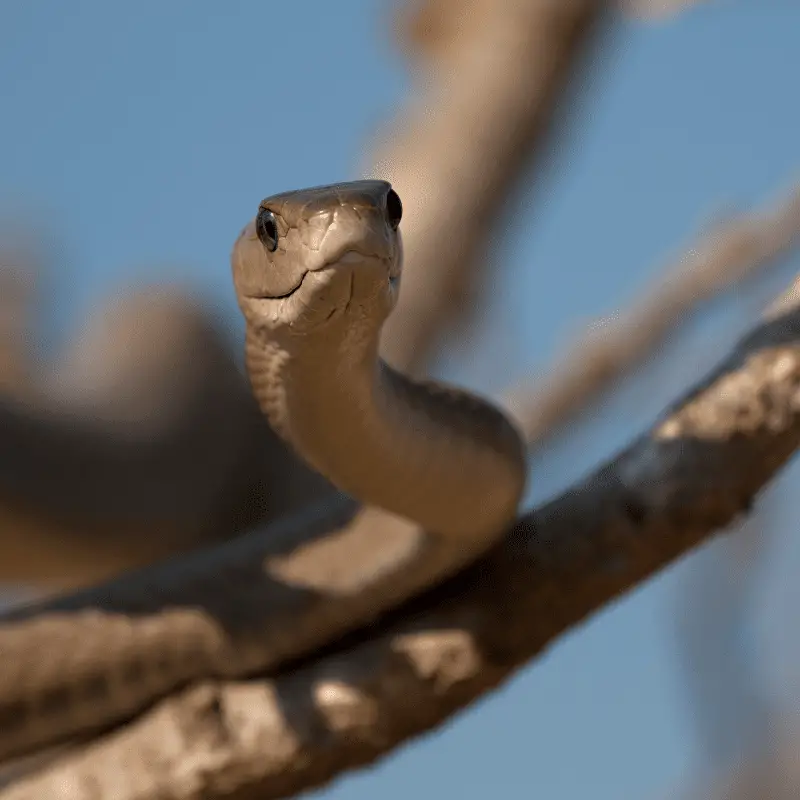
Shy
Even though these snakes are known for their aggressiveness, herpetologists indicate that the black mambas are remarkably shy. These snakes have a secretive nature as well. When in threat, these snakes prefer to escape the situation rather than confronting it. However, the black mambas can showcase highly aggressive behaviour if they are cornered or feel highly threatened. The defensive posture and behaviour of the black mambas are their most distinct characteristics.
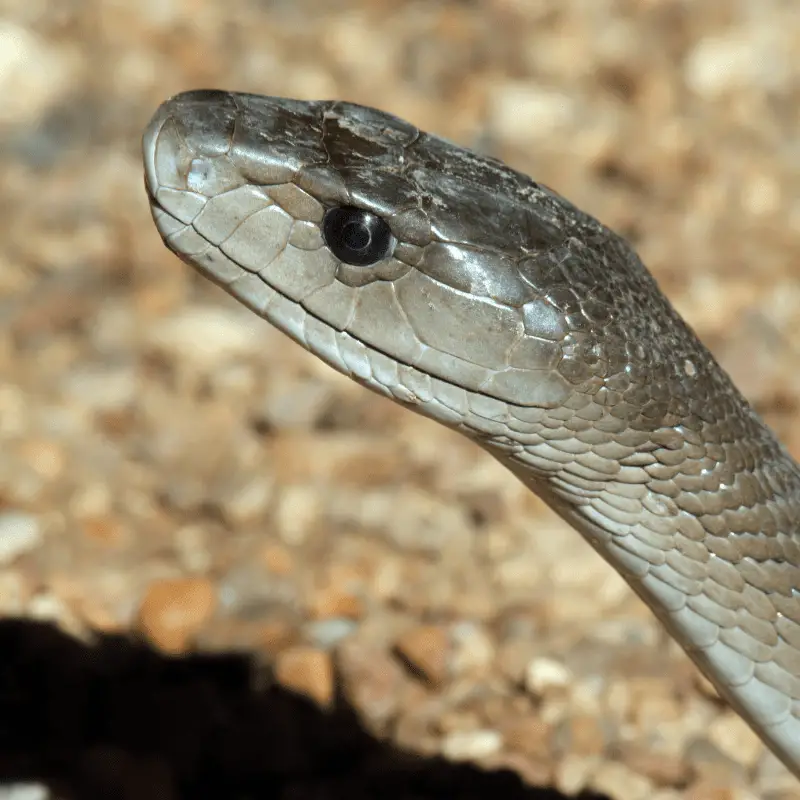
When these snakes are provoked with no possible escape route, they start to showcase their defensive behaviour. In this situation, black mambas raise their bodies and stand erect to intimidate the attacker. These snakes can raise the front one-third of their body more than 3 to 4 feet above the ground.
After that, they spread their neck flaps in a cobra-like manner and open their mouths to expose the black markings. It is the typical defensive behaviour of black mambas. Through this, they try to scare away the threats without engaging in further violent behaviour. If provoked even more, these snakes strike the attacker and deliver venom in a large amount. Black mambas strike their attackers repeatedly, providing a significant amount of venom each time. They also hiss loudly during the attack. Once the confrontation is over, the snake slithers away from the scene of conflict as soon as possible.
Predators
The black mamba snakes do not have any specific predators. Destruction of natural habitats through human intervention is the greatest threat to them.
Diet
Black mamba snakes live on the birds and small mammals. There are some reports of black mambas with full-grown cobras in their stomach. The researchers indicate that black mamba snakes hunt their prey by biting them.
Once they bite the animal, these snakes release them and follow them till it becomes paralyzed or dies. These snakes devour their food whole. Their flexible jaws can dislocate to consume animals four times bigger than their mouth size.
Reproduction
Spring and summer is the mating season for the black mambas. The male snakes fight for the attention and affection of the female snakes. The female snakes can lay 6 to 25 eggs at any one time. Most of the time, the female snakes choose warm and damp caves. The mother does not care for the eggs or the neonates. The eggs hatch about three months later, and the snakelets are born measuring between 16 and 24 inches.
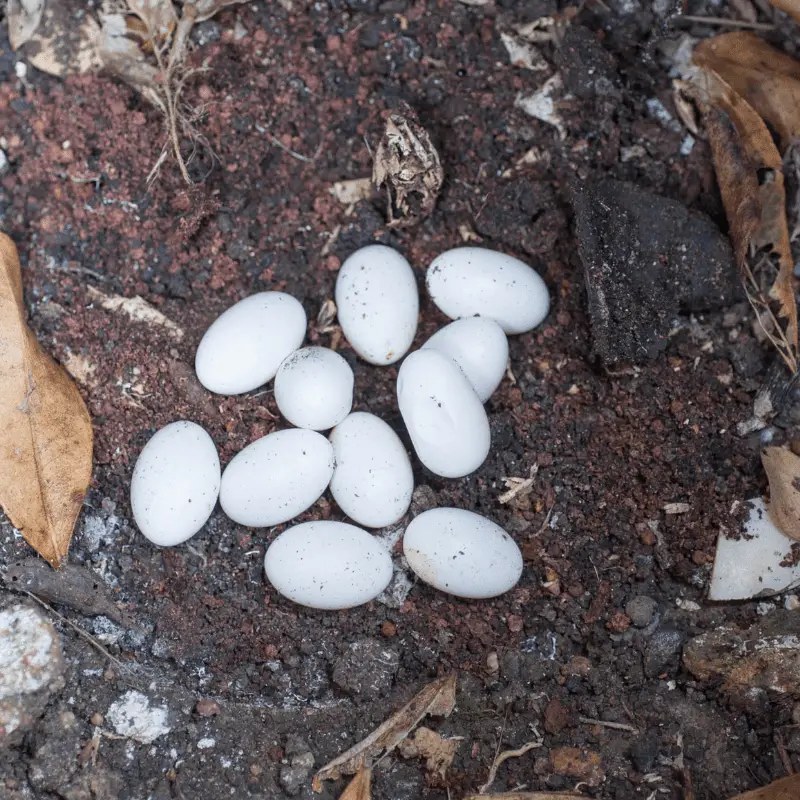
Bite
The venom of the back mamba is exceptionally potent. Only a couple of drops of black mamba venom is enough to kill a human. Like the coral snakes and cobras, the venom of the black mamba snakes contains neurotoxins.
Not only that, the venom is extremely fast-acting. Within a brief period, it can paralyze the victims. If the antivenom is not administered within the right time, the victim will die. The fatality rate of the black mamba bite is 100 per cent.
Records have shown that the black mamba bite victims can die within 20 to 30 minutes of the bite. However, most of the time, the victims live up to three hours or longer.
Classification
The black mamba is a member of the mamba genus. There are many other mamba snakes, like eastern green mamba, Jameson’s mamba, and western green mamba. All the mambas fall under the Elapidae family, much like the coral snakes and cobras.
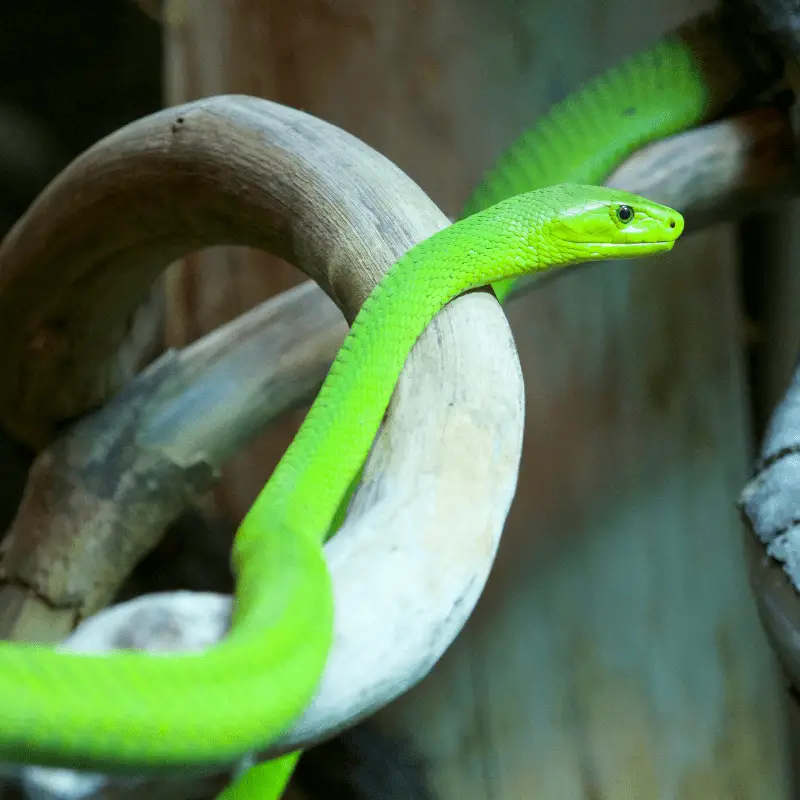
Apart from the black mambas, all the other mambas are smaller and less venomous than this one. However, their poison can still be fatal. All of these snakes are arboreal and reside on trees. Mambas are solitary snakes and known for dropping down on their victims from the top of the tree.
Conservation
Thanks to their extensive distribution, the black mambas are considered one of the least concerned snake species. However, while these snakes might not be endangered in the plain eyes, they face a considerable threat. Human expansion is happening at lightning speed in Africa.
This expansion can destroy the natural habitat of the black mambas, creating a vast human-animal conflict. People who face the black mamba snakes are advised to move away from the place. If the snake is inside any building, it is wise to call a professional snake handler.
Myths
The story where the black mamba chases a man on horseback is familiar in Africa. However, most people believe that the black mambas are incredibly aggressive and can bite people without provocation.
The images that these two pieces of information generate are not authentic. Even though the black mambas are pretty fast, they are not as fast as a horse. So, there is no question of chasing a man on horseback. Also, these snakes are timid. They always prefer to slither away from any situation instead of confronting it.
Another well-known myth describes how one black mamba hung from the tree while biting five cows as they returned to their kraal. While a black mamba can kill a horse or a cow, it is one of the rarest incidents. Therefore, the fact that a single snake has killed five cows is simply unbelievable.
The reason is that the venom required to kill five cows simultaneously does not match the venom yield of the snake. Also, it is not like the black mambas to kill bovine animals that do not pose any threat to the snake.
There is yet another myth about a black mamba with a feather on its head, named Ndlondlo. The folklores explain that the snake with feathers moved and struck like lightning. Ndlondlo used to move so fast that the feather created a whistling sound. There is no scientific proof found that can support this tale in any way. The local researchers have pointed out a powerful king who used to wear a single feather on his head. After the king passed away, his fame and reputation were passed on to black mamba.

